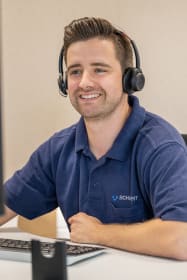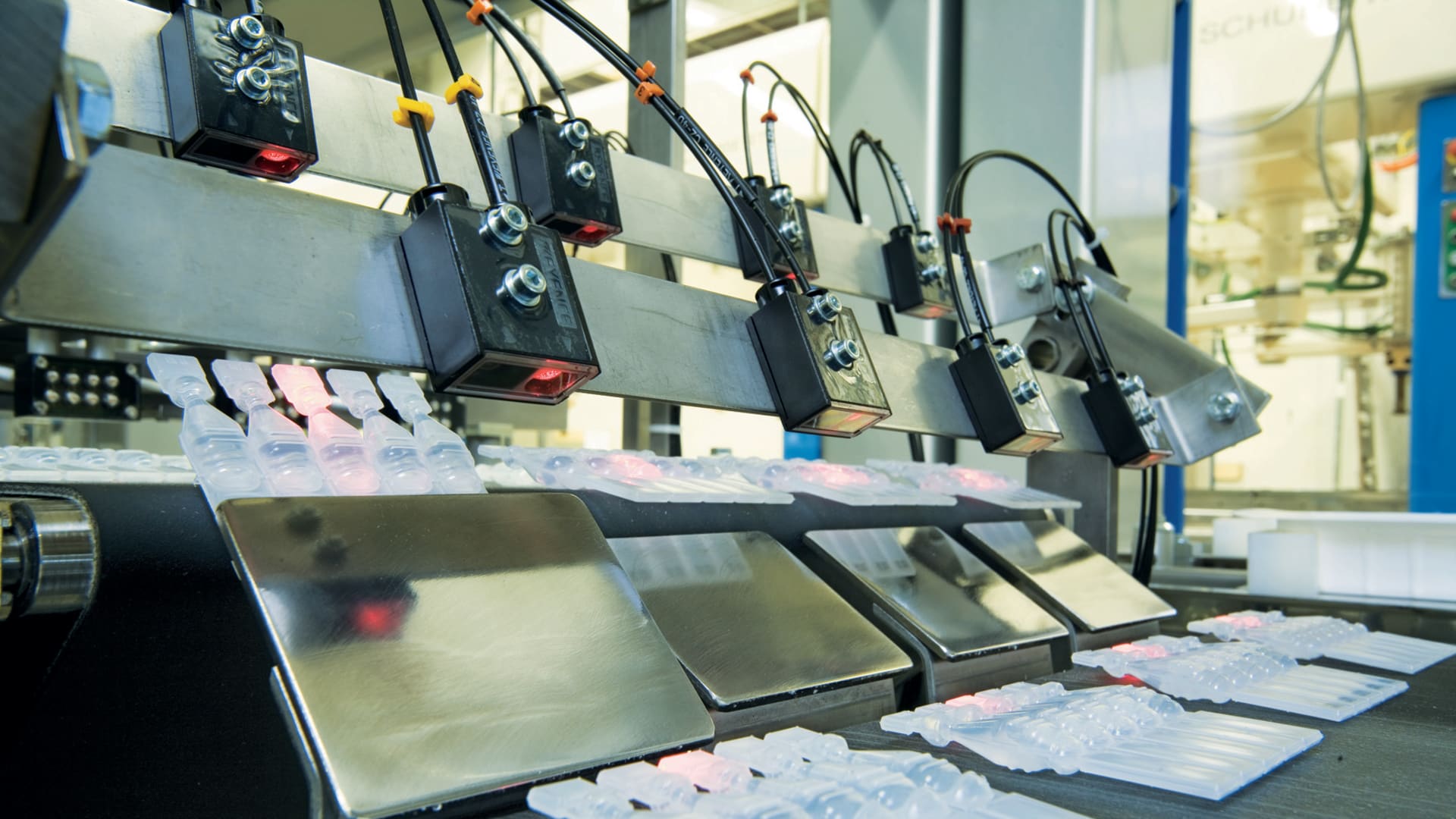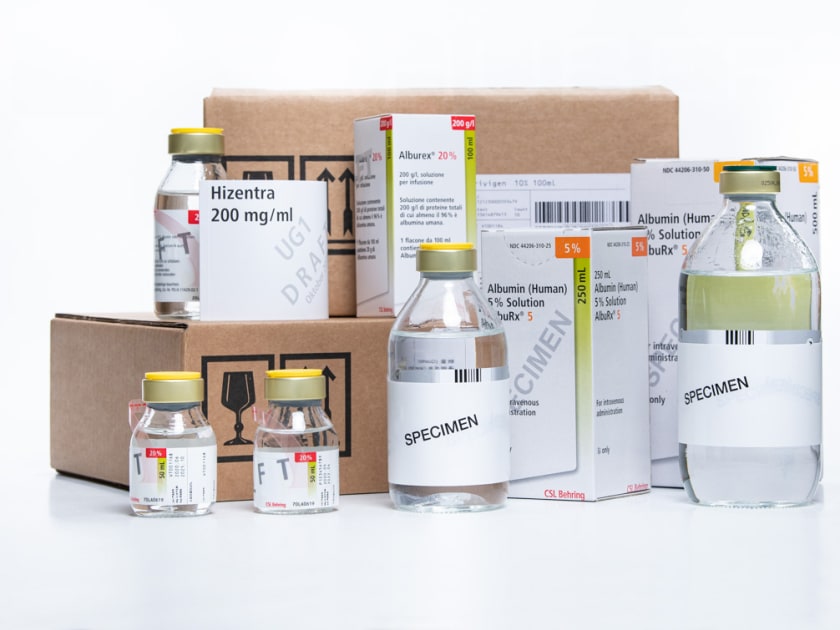Packaging line for two different products:
American pharmaceutical company Allergan had an unusual challenge for the team at Schubert-Pharma.
A vial product with light-sensitive eye drops needed to be packed hermetically in a plastic tray and another vial product had to be packed into a folding box, to be later presented on a shelf. The challenge was that both products had to be handled on the very same packaging line.
The bottleneck identified by those responsible at Allergan affected two aspects of secondary packaging. It was clear to see that the old, often only partially automated machines were reaching the limits of their capacity as a result of increasing demand. Additionally, it was not possible to switch over to various packing formats within short periods of time.
The eye drops packed into folding cartons can be bought over the counter. There are seven different carton sizes which contain between 20 and 100 packaged portions in order to provide consumers with a wider choice.
The prescription product is offered in packs of 30. These eye drops are sensitive to light and are therefore packed in a hermetically sealed plastic container. All products in sealed containers are only available on prescription.













